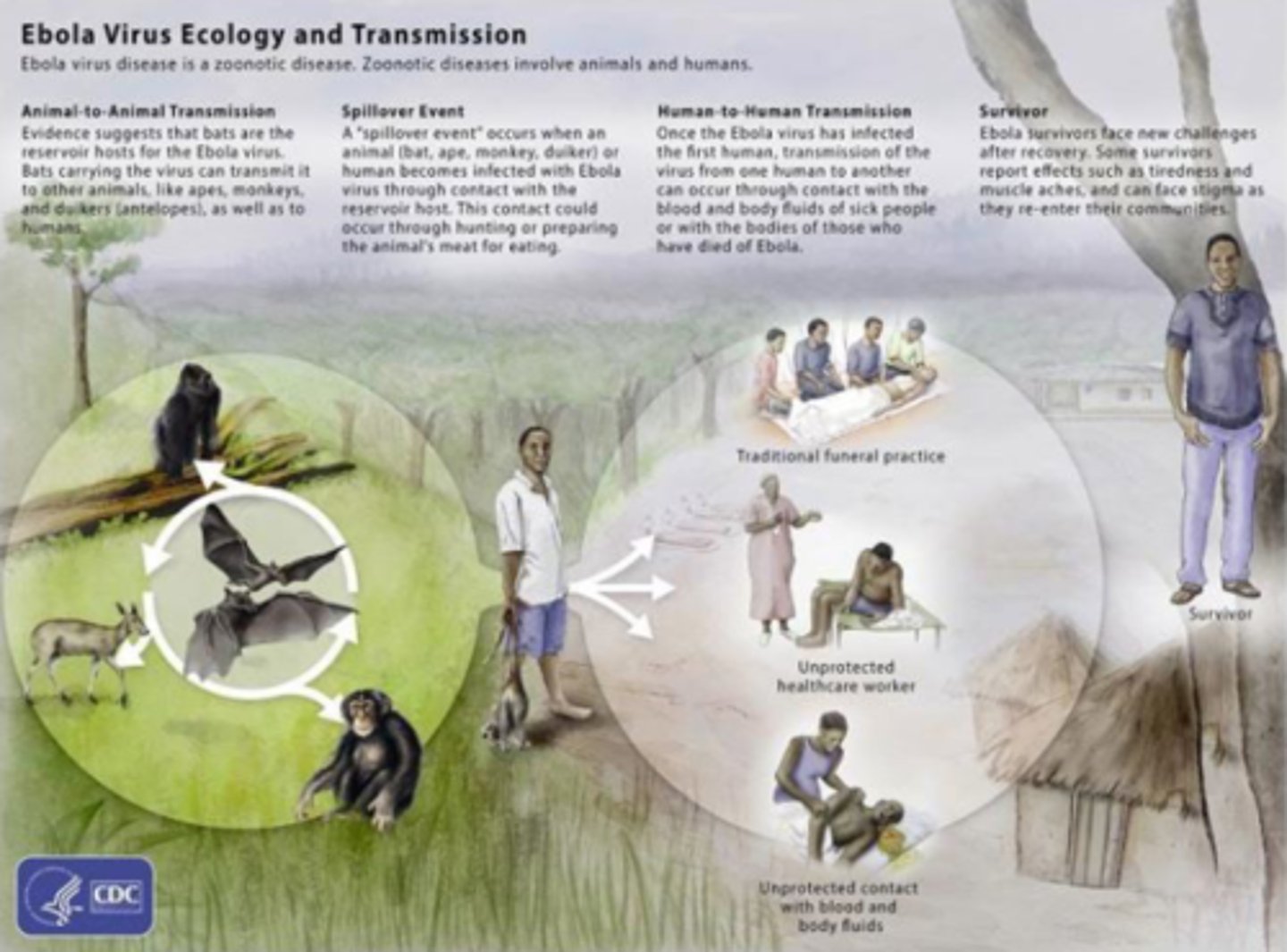Zoonoses - Wet Markets and Wildlife (TV3001, Lecture 4 Notes)
1/5
There's no tags or description
Looks like no tags are added yet.
Name | Mastery | Learn | Test | Matching | Spaced |
|---|
No study sessions yet.
6 Terms
Discuss and describe zoonotic risks associated with animal markets
- Create opportunities for cross-species transmission due to the close proximity of diverse animal species, including wildlife and humans
- Zoonotic risk factors include; high-risk animal taxa, presence of live wild animals, poor hygiene, large market size, high animal density/mixing and lengthy supply chain
- Bushmeat hunting, handling, butchering and transporting wild animals for consumption carries significant risks of exposure to blood-borne pathogens
Discuss transmission of Ebola virus

Define synanthropic wildlife
Synanthropic species are wildlife that have evolved to live near humans and benefit from human settlements and their environmental modifications.
Increased populations of synanthropic species in urban areas can elevate the risk of disease transmission - reduced species diversity coupled with high numbers of individual animals in these "pest" species can lead to "eruptive" breeding.
List diseases associated with urbanisation
- Francisella tularensis in possums, beaver, sheep and game
- Plague (Yersinia pestis) in fleas
- Lyme disease (Borrelia burgdorferi) in ticks
- Hantaviruses in dear mouse
- Henipaviruses (Hendra and Nipah) in bats
Identify and describe common themes and control strategies to prevent the spread of such diseases
Rabies - vaccination of domestic animals (especially dogs) is crucial with understanding and disrupting the transmission cycle, considering hosts, vectors, and susceptible species, is essential for prevention.
Plague - prevention involves controlling rodent populations and flea exposure, antibiotic treatment is effective if administered promptly.
Tularemia - avoiding contact with potentially infected animals (e.g., rabbits), using insect repellent, and practicing safe handling of carcasses are important preventive measures.
Lyme disease - preventing tick bites through personal protective measures and vector control are important.
Monkeypox - historically, smallpox vaccination provided protection, control measures focus on understanding transmission routes and implementing appropriate public health responses.
Ebola - prevention relies on avoiding contact with infected animals and their bodily fluids, standard hygiene practices are important while not usually foodborne, handling and consumption of bushmeat in certain regions pose a risk
Henipaviruses - vaccinating horses and reducing contact between flying foxes and horses are key prevention strategies.
Hantaviruses - controlling rodent populations and avoiding exposure to their excreta are crucial for prevention.
Describe non-technical/regulatory interventions that can be considered in reducing the transmission of zoonotic diseases from animal markets
Technical controls
- Strengthening surveillance systems for zoonotic pathogens in domestic animals, wildlife, and the environment for early warning•
- Implementing infection control and prevention measures, including hygiene, PPE, crowd control, and physical distancing
Regulatory steps
- Suspending live wild animal sales in traditional food markets
- Improving hygiene and sanitation standards in traditional food markets
- Implementing food regulations to control the farming and sale of wild animals for human consumption
- Training food and veterinary inspectors for compliance and enforcement